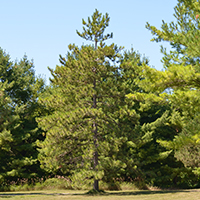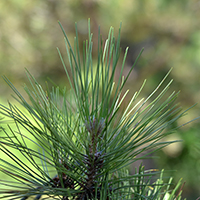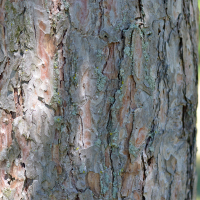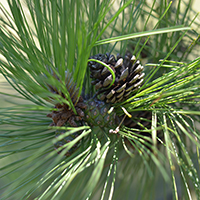What red pine looks like
Size and shape
- Reaches 35 metres high.
- Trunk is usually slender and straight (up to 30 to 75 centimetres in diameter).
Needles
- Shiny, dark green needles (10 to 16 centimetres long).
- Grow in bunches of two.
Bark
- Reddish-pink in colour.
Cones
- Small, brown and ovoid cones (4 to 7 centimetres long).
- Do not have stems or prickles.
- Start developing between 15 and 50 years after planting.
- Take 2 years to mature.
Where red pine is found
Red pine is found across most of Ontario, from Lake Nipigon to Quebec and south to the Great Lakes.
What you need to know to grow red pine
- Moisture: tolerates a variety of moisture levels.
- Soil: can tolerate poor, rocky and sandy soil.
- Shade: grows best in full sun.
- Caution:red pine needs sun and space to grow. Red pine trees are intolerant of air pollution and salt damage so they grow best in the countryside.
Benefits and uses of red pine
Wildlife benefits
Seeds from red pine are a food source for songbirds and small mammals, especially snowshoe hares. Red pine can also provide cover and habitat for a variety of bird species.
Commercial uses
Red pine wood is used as structural timber due to its strength. It’s also used for:
- poles and posts
- interior and exterior home finishes, including doors, paneling, and blinds
- fuel
Current research
To learn about our research on red pine, visit our science publications catalogue and search for “red pine.”
Fun facts about red pine
- Deep and widespread root systems allow red pine trees to withstand strong winds without blowing down.
Updated: January 10, 2024
Published: July 18, 2014



